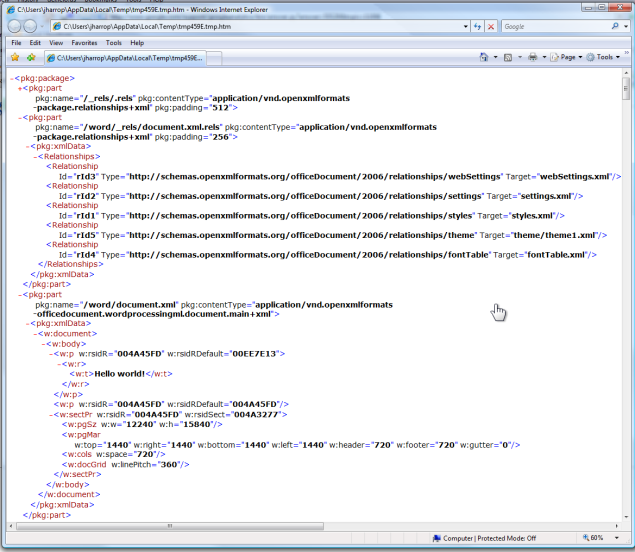Microsoft Word and the (i4i) patent madness
September 16th, 2009 by JasonBy now you’ve probably heard how hitherto largely unknown i4i teamed up with some bottom feeding lowlife and successfully sued Microsoft for patent infringement to the tune of USD 240 million.
If you read the patent in question, US patent number 5787449, you’ll see that the so-called invention was entirely obvious, consisting only of annotations pointing to positions in a character stream (as distinct from embedded within it).
Microsoft suggested some prior art, but nothing which knocked out the patent.
What i4i chose to call a ‘metacode’ sounds a lot like the markers described in 1986 in Data Structures in the Andrew Text Editor:
A marker is a data structure that refers to a portion of the text of a document; the portion starting at some character and extending for some length.
The people involved in the Text Encoding Initiative guidelines leading up to publication of their proposal 3 in 1994 (which is before the patent was filed) probably discussed and published relevant stuff as well – did anyone ask them? [Edit 18/9/09] Hmmm, Markup Reconsidered (presented in 1992) says:
A word should be said about so-called out-of-line markup, non-embedded structure that conforms to the syntactic requirements of a given markup standard
and references a 1992 document: David Barnard, Lou Burnard, Jean-Pierre Gaspart, Lynne Price, C.M. Sperberg-McQueen, and Nino Varile, “Notes on SGML Solutions to Markup Problems”, TEI MLW18, which I haven’t looked at. And “Refining our Notion of What Text Really Is: The Problem of Overlapping Hierarchies” contains a wealth of historical references which probably contain stuff.
[Added 18/9/09] Most interestingly, Ted Nelson states in “Embedded Markup Considered Harmful” that Xanadu has used parallel markup since the 1960’s! Unfortunately, he didn’t publish much about it (which limits its value as prior art); though Rick points out that Nelson disclosed some stuff in his 1992 book.
So the i4i patent should have been knocked out:
- because it was obvious, and
- because the USPTO and Microsoft should have found prior art.
In any case, the patent system should be reformed, so that, if you must have a patent system at all, and one in which software and algorithms are effectively patentable, such patents last for no more than say 4 years from the priority date. Their patent would have expired in 1998 (the same year it was granted!).
In this case, what i4i patented has been independently thought of (ie invented) as part of one approach to the related problem of overlapping markup. Independent invention should also be a defense (although that might not have helped Microsoft in this case)
A further thought: what if patentees were liable every time they described something as new if it could be shown that it wasn’t? That might give them pause for thought.


